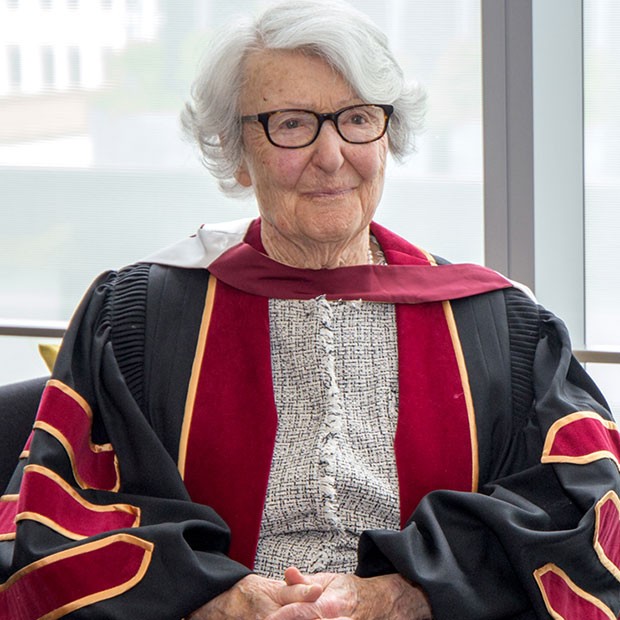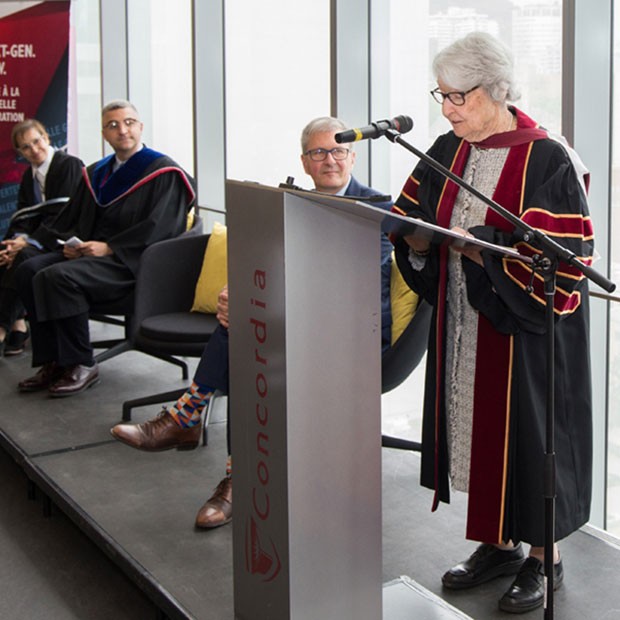Here is her acceptance speech:
Mr. President and Vice-Chancellor, honoured guests, graduates, students,family and friends:
My deepest thanks for this tremendous honor. It’s a great privilege to stand with Concordia University’s administration, faculty and students today.
I want to acknowledge that Concordia University is located on unceded Indigenous lands. The Kanien'kehá:ka [kunyin kehaka] Nation is widely recognized as the custodians of the lands and waters where we are gathered here today.
This land has seen many phases of human settlement, dating back thousands of years before contact with European settlers. The land was covered with forests thick with pines and maples, yellow birch and cedars. The waters offered food and ease of transportation among many nations. So much has changed since that time, yet the power of the natural world persists, reminding us of our deep connection to the land.
Today, Montreal is home to many hundreds of cultural communities, coming here from all corners of the globe to find security, honest livelihood and bright future. The land continues to provide space to make a home – sometimes even space to grow some food – but the demands flowing from a dense and complex urban settlement are proving to be a tremendous challenge for those who live and work in the region.
You have each made many good choices that have brought you to this wonderful day: gaining entry to prestigious Concordia University, bringing focus and resourcefulness to your studies and applying your knowledge and creative thinking to your communities, both small and large.
This is what will make all the difference: your ability to apply yourselves with creativity and resiliency to meet what lies just over the horizon.
The world you are about to inherit is not a simple one: let me quote a poem by Ian McHarg, author of “Design with Nature” which says it all:
We are transients,
But we can be guardians;
we can protect and restore;
…Commitment, energy, and art.
So you must aim to protect
all that is wild and wondrous.
To heal mutilation,
salve wounds.
restore the earth.

